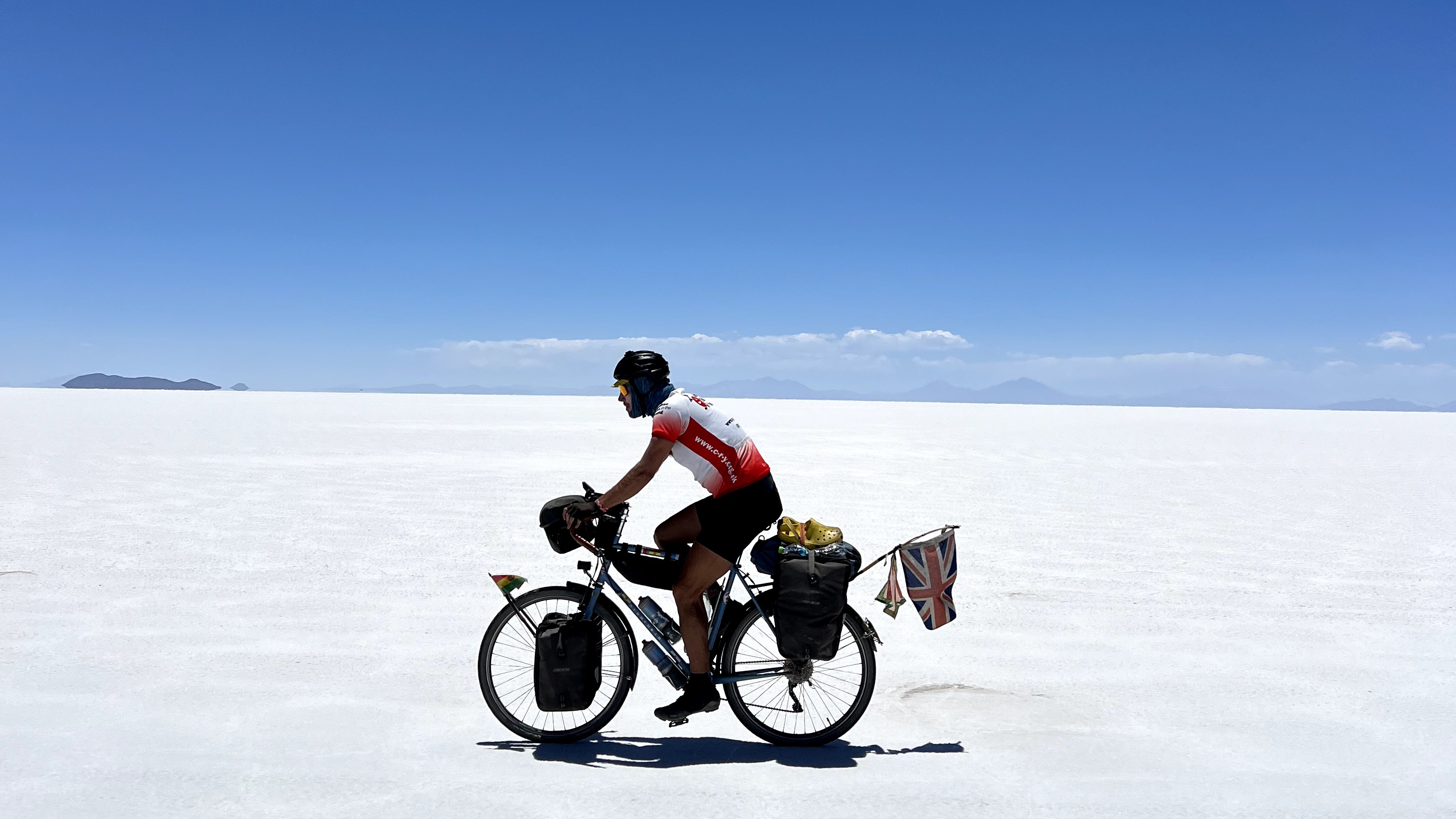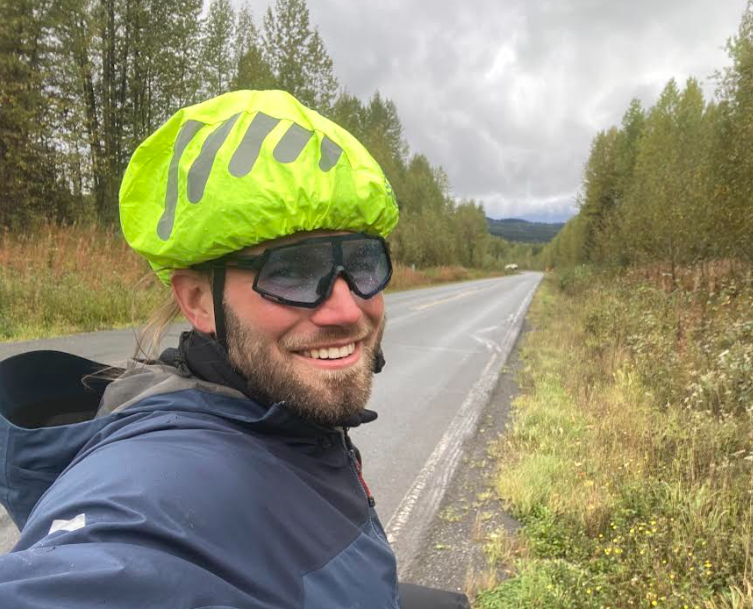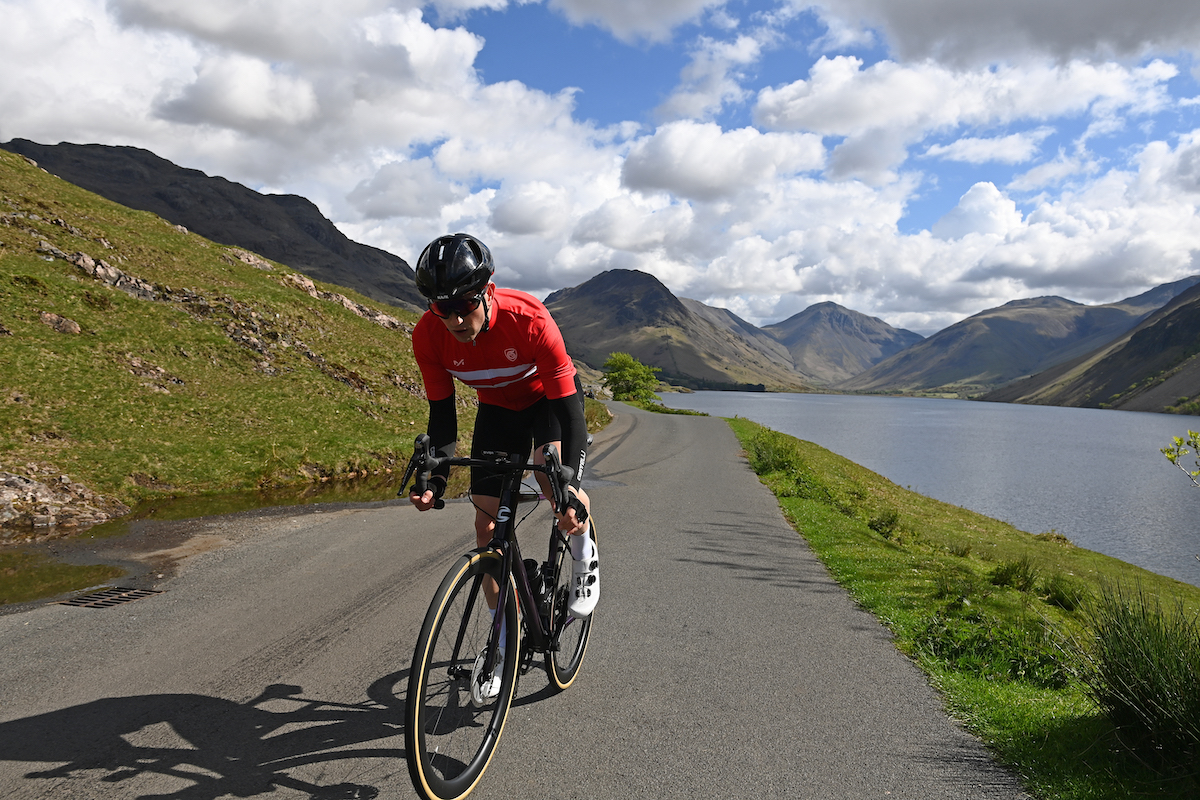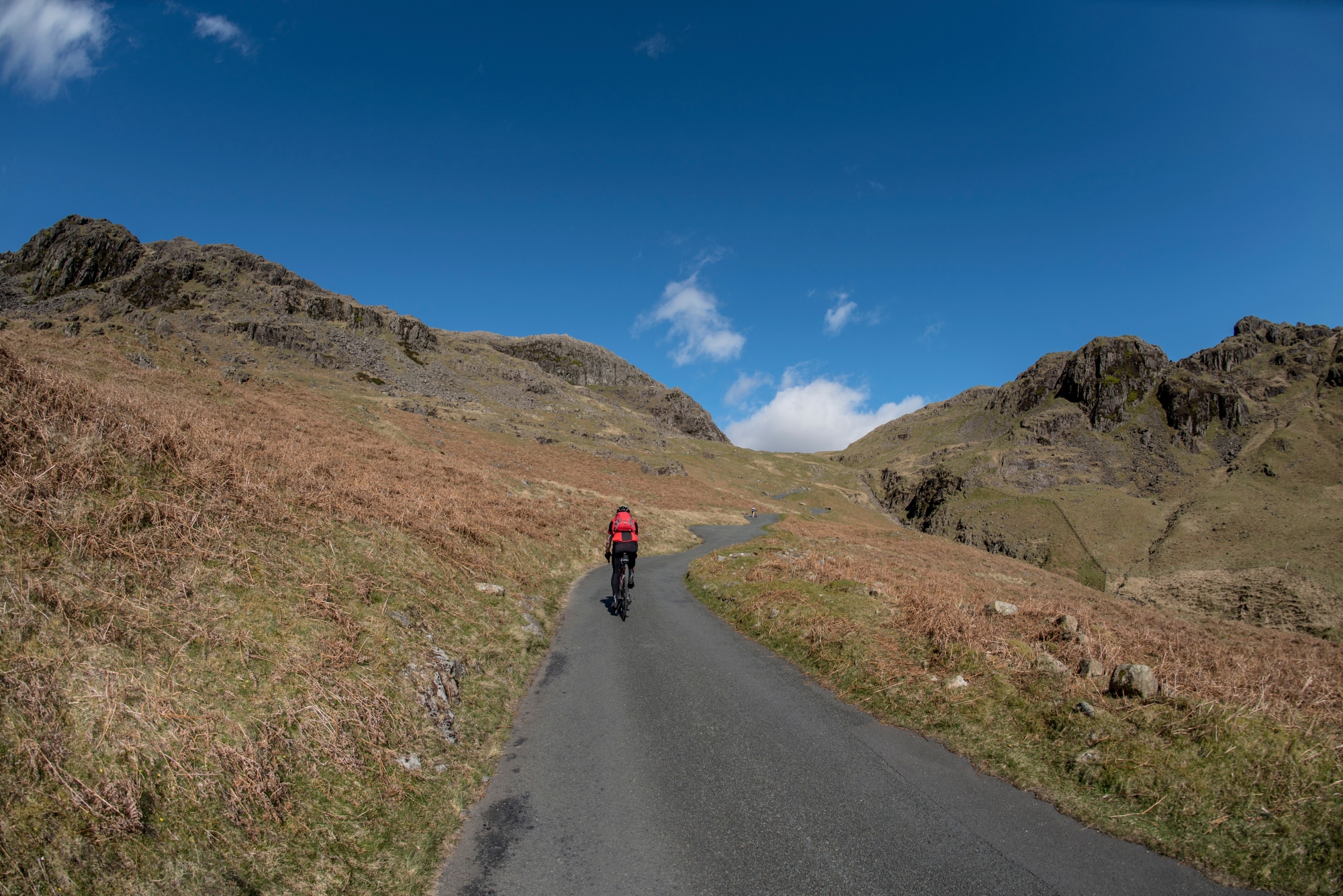
In our ‘Get Me Ready’ series, Steve Shrubsall speaks to cyclists taking on new challenges, hooking them up with cycling coach Jon Sharples in a bid to prepare them for the event. This month, James Benson-King - fresh from an 31,500 kilometre epic ride - gears up for the 100km ‘Team Townend Dirty Double’, a punchy sportive in the Lake District, with the goal of setting the fastet time possible over the distance.

James is no stranger to the saddle – the 31-year-old recently completed an 31,500km odyssey from Alaska to Argentina, riding for children’s heart charity CRY. But he wasn’t aiming for speed. Terms like functional threshold power and maximum aerobic function didn’t register on his radar at the time - the man from Bournemouth had the logistics of an intercontinental escapade to plan. That the wheels kept turning was enough. Indeed, dive into any given day of his Strava stats during the trip and you’re understandably greeted with wall-to-wall Zone 1.
So James’s trip was very much undertaken in slow-twitch style. No type-2 muscle fibres to see here. What this means is that what James lacks in top-end power, he makes up with an aerobic base the size of Bolivia.
And it’s on top of this foundation that we intend to add the requisite layers of fitness for James to have the best day out possible this September. The route is, as expected in the UK's Lake District, very hilly.
Optimising the training
Before we spoke to him, James had been following a generic plan taken from the web. He doesn’t own a power meter so has been using heart rate and RPE as a barometer of effort. Sessions so far are broken down into 'easy', 'tempo' and 'threshold' categories, with intensity ratings out of 10. Cadence is set to 'high', 'medium' or 'low'. Three to four sessions a week have been prescribed and there’s no off-bike strength and conditioning, but there are bike based low cadence efforts throughout the course of the plan.
Our coach says...

This event is more challenging than many might realise, demanding significant physical endurance and mental toughness. The stunning scenery of the Lakes can be a huge distraction, tempting riders to ease off when the pain kicks in. Therefore, it's crucial to train specifically for the demands of this event. James has been following a basic plan, but more specific training is needed to prepare effectively.
The current plan is too generic and lacks the specificity required for a hilly, long-distance event. Since the course features six significant climbs, each taking about 15-20 minutes to complete, the training should include targeted hill sessions. Interval training that simulates these climbs, either on hills or with a turbo trainer indoors, is essential. This should involve slow grinding climbs to build the necessary leg strength and power.
Power development is another crucial aspect, as it comes from the force applied to the pedals. Integrating strength training exercises focused on lower body power, such as squats and lunges, combined with on-bike sessions emphasising low-cadence, high-resistance pedalling, will be beneficial.
The plan also neglects descending skills, which are just as important as climbing. Incorporating sessions focused on descending techniques, such as body positioning, braking control, and handling at high speeds, will improve safety and efficiency.
Endurance is key for completing the 100km distance. The current plan should include longer rides, progressively increasing in distance to build stamina and ensure the ability to maintain a steady pace. Scheduling at least one long ride per week is recommended.
Optimising the nutrition
James is aiming to consume 70-80g of carbohydrate an hour, but says he often ends up eating a lot less. He would definitely prefer more savoury food whilst riding. On his normal rides at home, he eats mostly flapjacks, bananas and occasionally energy bars, but is thinking of trying energy drinks for the event. He would also like to lose weight before the ride.
Our coach says...
With the goal of maximising speed in a hilly event, it’s easy to think, “I need to lose weight!” While shedding some extra pounds to improve your power-to-weight ratio can be beneficial, it’s crucial to approach this carefully to avoid losing power or causing overtraining syndrome. Competitive cyclists often have lean physiques, but their secret lies in consistent fueling before, during, and after their rides—not starving themselves. Reducing food intake too drastically can lead to tiredness, mood swings, and being "hangry," which can strain relationships with loved ones [as well as risking hormonal imbalance and longer-term health conditions - ed]. Balancing weight loss with proper nutrition is essential for maintaining performance and mood.
The safest way for James to lose weight is to gradually extend the duration of his rides while slightly reducing caloric intake. Aim for a caloric deficit that supports a gradual weight loss of 0.5 to 1 pound per week. This approach ensures stable energy levels for training and recovery. Four weeks before the event, James should stop focusing on weight loss and instead prioritise energy for recovery from training, ensuring his body adapts well to dietary changes to avoid surprises on race day.
In the 3-4 days leading up to the event, James should focus on carbo-loading to maximise glycogen stores in his muscles. Increase carbohydrate intake and ensure proper hydration by drinking plenty of water and considering electrolyte drinks to maintain fluid balance.
On event day, James should consume a light, high-carbohydrate meal 2-3 hours before the start. Options like porridge with fruit, a banana with peanut butter, or a protein smoothie are ideal. During the event, the safest time to refuel is on climbs, not descents. Plan to consume 60-90 grams of carbohydrates per hour through energy gels, bars, and sports drinks. Sports nutrition products are designed for easy consumption while riding—energy gels, which can be opened with your teeth, provide 25-30 grams of carbs quickly and efficiently. Always remember to dispose of litter responsibly.
Small, frequent sips of water or electrolyte drinks help maintain hydration and prevent cramps. Avoid trying any new foods or supplements on race day to ensure the body responds well.
Optimising the gear
James rides a Cannondale Topstone Carbon 105 (2019) gravel bike, though he's hoping to find a sponsor and be able to use a road bike for the event. He is riding Shimano RS100 rims with Vittoria Rubino 700Cx28mm tires and FSA Gossamer Pro Modular AGX+ groupset with gravel-ready gearing in the shape of 46/30 chainset and 11-34 cassette.
Our coach says...

Have you got a similar event planned? Here are Coach Jon's tips for tackling long hilly races or sportives...
1) Build up leg strength by winding up a slow cadence on ascents of similar distance to those in the race route. An indoor resistance trainer is your friend here if you’re unable to find anything suitable outside.
2) Focus on off-bike strength work. Double down on leg power by adding some squats and lunges to your training plan.
3) Descending skills are often neglected, with riders tending to concentrate on going up rather than down. A huge amount of time can be gained (or indeed lost) during descents. So practise technique, body position and braking for an efficient and safe way down.
4) Go long. It’s crucial to build up mitochondrial volume for long events, this increases cell capacity and in turn makes you more aerobically efficient. Incorporating long steady rides into your programme is the best way to do this.
You’ve heard the saying – "prepare or prepare to fail." You can be well-trained and physically ready for the event, but if you're not prepared for the curveballs that might come your way, things can go horribly wrong. Logistics and plan Bs are always useful to have up your sleeve. Issues like mechanicals, a chain breaking, crashing and damaging a component, or requiring a lift back with no phone reception can disrupt your ride. However, let's not focus too much on these potential mishaps. Instead, let's ensure James is prepared for the unpredictable British weather, which can deliver four seasons in one day—torrential rain or blazing sunburn!
James should consider moisture-wicking base layers to keep sweat off his skin and regulate body temperature. A high-quality, breathable cycling jersey and good quality padded bib shorts are essential for comfort and to reduce chafing – I can’t stress this enough. Given the unpredictable weather, a lightweight, waterproof rain jacket that is packable is a must-have. Arm and leg-warmers provide versatility for changing conditions, while gloves or mitts are essential. If you crash, the first thing you do is put your hands out – you could lose a lot of skin, which from experience, is not a nice thing to happen – so mitts ! Moisture-wicking socks and waterproof shoe covers will keep his feet dry. A well-ventilated helmet is mandatory, and a cycling cap underneath can offer protection from the sun and rain. Sunglasses with adaptive lenses are necessary to shield his eyes from UV rays, debris, and rain. Don’t forget suncream for skin protection during long hours outdoors.
Ensuring the bike is well-maintained and suited for the terrain is crucial. James should service his bike a few weeks before the event and ride it to avoid any last-minute mechanical issues. Opt for durable tyres with good puncture resistance, suitable for both wet and dry conditions. Carrying a compact repair kit is essential, including spare tubes, tyre levers, a mini-pump or CO2 inflator, a multi-tool, and a chain link. Proper preparation can prevent mechanical failures and ensure a smooth ride.







